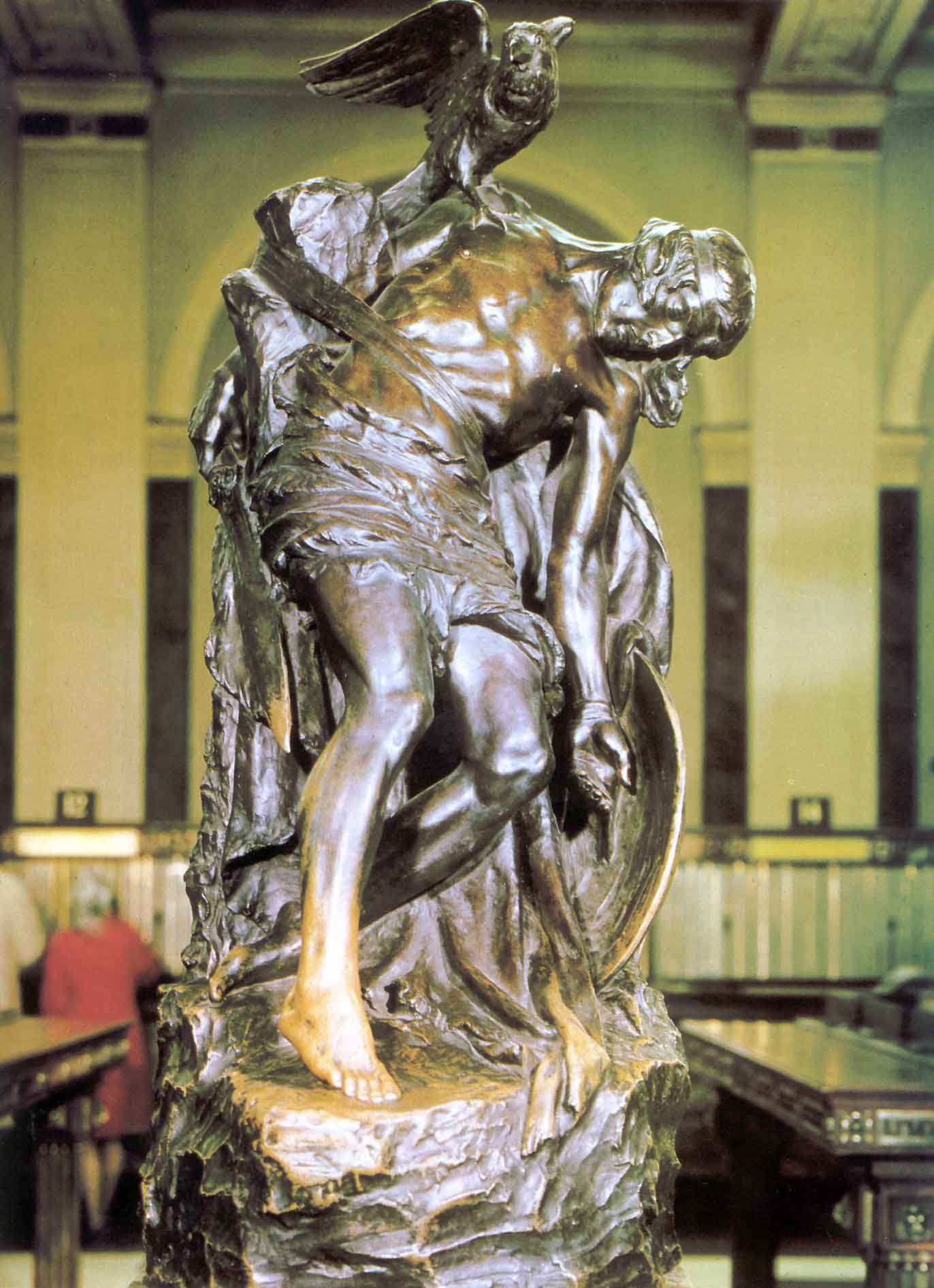Pictured Above: Oliver Sheppard’s “The Dying Cúchulain” (1911), given official placement in Dublin’s General Post Office, 1935.
In the “Cultural Nationalism” reading from this week, Terence Brown foreshadows what our upcoming encounters with W.B. Yeats (and other revivalists we may read) may entail. Brown discusses the Irish Literary Revival’s affinity for turning to the past for inspiration, or better yet, turning to a past that refuses to be pinned down: Irish myths and folklore. Brown mentions “Cuchulain,” who is often regarded as one of the most prominent heroes of Irish mythology, as being a resurgent source of inspiration for many of the revivalists. Brown discusses how “the Irish Literary Revival saw Cuchulain not simply as a mythological personage, but as a figure embodying the truly Irish spirit” (519). Much like last week’s discussion regarding anti-rationality in Bram Stoker’s Dracula and the gothic novel, Yeats and other revivalists began redirecting their work away from “realism or naturalism,” heavily drawing upon these mysterious, magical myths of Ireland (519). When trying to find some of the revival writer’s work containing mentionings of Cuchulain, I came across Yeats’s “The Statues.” In this poem, Yeats ponders the significance of a statue of a dying Cuchulain that rests inside the General Post Office in Dublin:
When Pearse summoned Cuchulain to his side.
What stalked through the post Office?
…We Irish, born into that ancient sect
But thrown upon this filthy modern tide (Yeats 25-26, 28-29).
As we learned in Kilfeather this week, Patrick Pearse was one of the men who led the 1916 Easter Rising. Considering the GPO was the site of the Easter Rising, this statue of a dying Cuchulain acts as a commemorative monument, comparing Pearse’s efforts to that of one of the greatest Irish mythological warriors. The subsequent lines reinforce the precise tension between past and modernity that Brown discusses in this week’s reading, a clash that these writers often interrogated. Having a statue of a mythological warrior to commemorate the valiant efforts of the Easter Uprising indicates a culture steeping in mythology, which again, was greatly popularized by Yeats and other revivalists. In fact, the Cuchulain statue that now stands inside the GPO was not even inspired by the Easter Rising or originally intended to be a commemorative monument. The artist, Oliver Sheppard, sculpted it before the Uprising; his inspiration for it came from the Irish Literary Revival Movement. The image of the statue was even later included on 1966 commemorative 10-shilling pieces (pictured below), as well as stamps and saving certificates (source: https://www.irishtimes.com/culture/books/modern-ireland-in-100-artworks-1935-the-death-of-c%C3%BAchulainn-by-oliver-sheppard-1.2154483). I’m looking forward to reading more about Yeats and any other revival writers we are to encounter. Besides stamps and statues, I’m excited to see what else their return to the mythological brought about.


I found the discussions about mythological revival in literature during the Irish Revival super interesting. I have always read this genre of literature but never thought any deeper about the reason for increased supernatural elements. Brown’s ideas of the writers of the revival “composing a sacred book” as almost a new religion was really interesting, given the evangelical roots of many authors. I love your connection with the political revivals of the time. You really demonstrated brown’s comments about the cultural revival being a political statement, or at least related to politics in some way. I am excited to learn more about the connection and implications.